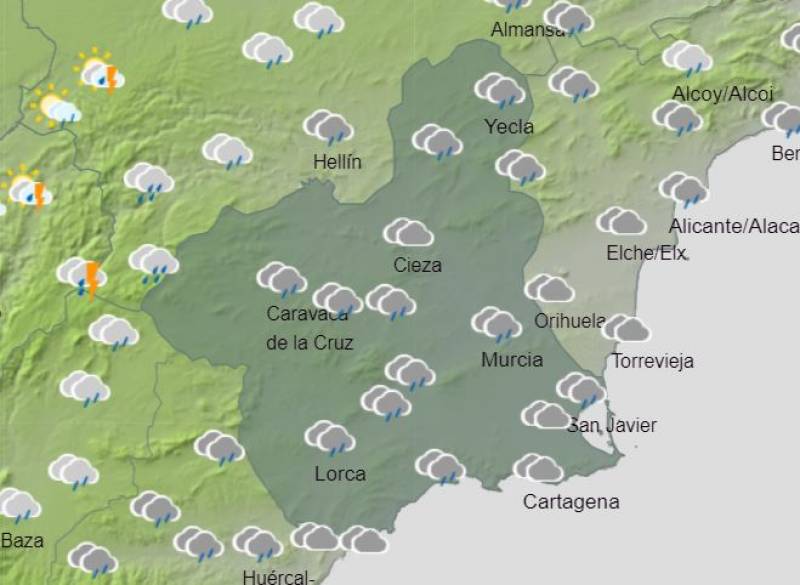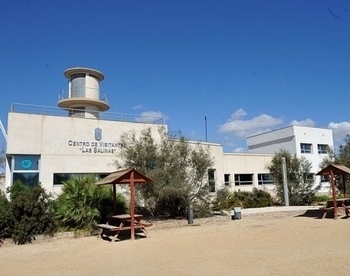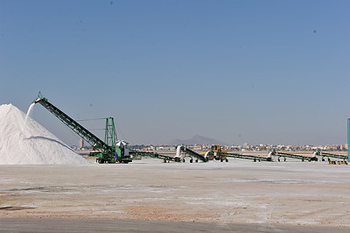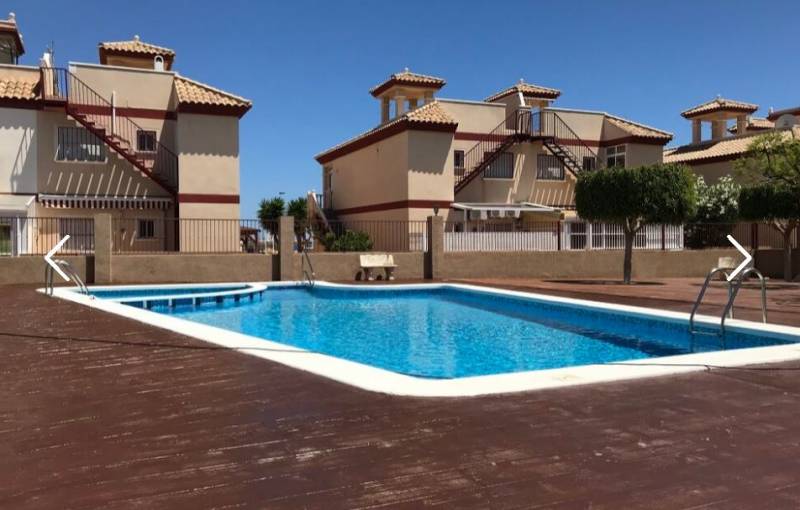Los Cuarteros, San Pedro del Pinatar
Pedanías in San Pedro del Pinatar - Los Cuarteros
 Los Cuarteros is a Pedanía of San Pedro del Pinatar which occupies the corner by the Molino de Quintín, the settlement at the junction between the Mar Menor and the Parque Salinas.
Los Cuarteros is a Pedanía of San Pedro del Pinatar which occupies the corner by the Molino de Quintín, the settlement at the junction between the Mar Menor and the Parque Salinas.
Today it is filled with Bars, Restaurants and apartments, a busy area relying on the tourist trade, but over 2000 years ago, this little pedanía was an important and wealthy trading zone.
Archaeological findings around Los Cuarteros have been numerous, and include remains which show the presence of Phoenician and Greek traders operating from this port.
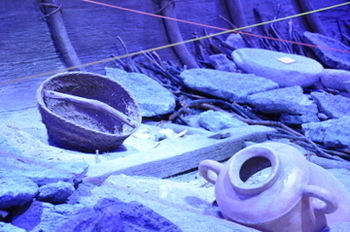 The Phoenicians were especially active traders, using a number of commercial ports on the coast of Murcia and were known to have been working along this coastline in around 700BC, as is evidenced by the numerous remains discovered, which include 2 shipwrecks at Mazarrón and the important Bajo de la Campana site at La Manga del Mar Menor.
The Phoenicians were especially active traders, using a number of commercial ports on the coast of Murcia and were known to have been working along this coastline in around 700BC, as is evidenced by the numerous remains discovered, which include 2 shipwrecks at Mazarrón and the important Bajo de la Campana site at La Manga del Mar Menor.
To read more about this culture, Click The Phoenicians in Murcia.
During this period all types of raw materials were traded, evidence of Esparto grass, used in a vast number of products for weaving baskets and rope, foodstuffs, including spicy fish sauces and salted fish, minerals and ores, dyes extracted from fish shells, ceramics, and even surprise finds such as pine nuts, have all been found in excavations.
Following the invasion of the Romans in 209 BC, Los Cuarteros was included in the “Campus Spartarius”, the name given to the campo surrounding Cartagena due to the quantity of valuable esparto grass which grew there. However, there was another natural resource prized by the Romans: salt.
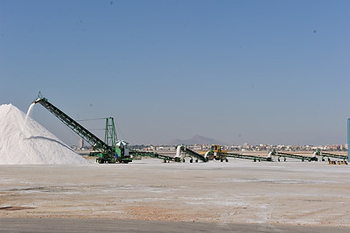 Salt trading, salted fish and salted fish products such as garum sauce ( Click garum sauce) brought economic prosperity to the whole area, and was such good business that sometimes the Roman Empire even paid their troops with salt ( sal) : philologists believe that this is the origin of our modern word “salary”.
Salt trading, salted fish and salted fish products such as garum sauce ( Click garum sauce) brought economic prosperity to the whole area, and was such good business that sometimes the Roman Empire even paid their troops with salt ( sal) : philologists believe that this is the origin of our modern word “salary”.
Following the departure of the Romans, economic activity declined, and although the Arabs were known to have re-initiated activities in the salt flats during their own occupation (713 to 1243) there are no remains of their presence in this pedanía.
The area was largely depopulated during the Middle Ages and the Early Modern period due to the constant raids on the coast by Berber pirates from the north of Africa.
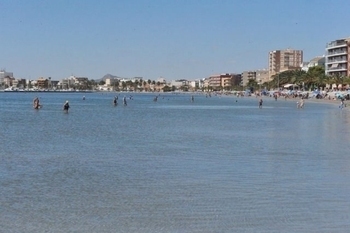 By the 18th century, repopulation was underway, and Los Cuarteros was a humble group of fishermen’s dwellings.
By the 18th century, repopulation was underway, and Los Cuarteros was a humble group of fishermen’s dwellings.
In the 18th century, though, things changed drastically. The fishermen became owners of their homes, and of small plots of land alongside, where they grew food for their own self-sufficiency and sold any surplus, the name of the area deriving from the main family who occupied the plots, Los Cuarteros.
This is a very common practice. many such hamlets are named after the families who lived in them across the region.
In 1836 the municipality of San Pedro del Pinatar became independent.
In this period three shops came into being in Los Cuarteros within a short space of time, the first in the area. The shopkeepers were the Aquilino family, the Roque Espinosa family and Eustaquio Espinosa.
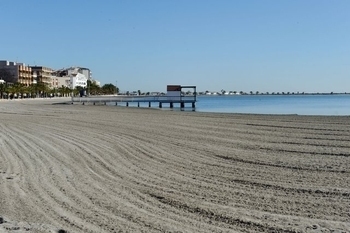 The situation in Los Cuarteros altered in the first half of the 20th century. Previously it had consisted of Los Cuarteros Altos, which occupied the land where the locality now lies, without direct access to the sea, and Los Cuarteros Bajos to the south, including the beach. A dispute arose in connection with the name of Los Cuarteros Bajos, and the inhabitants ended up demanding that the name be changed. The Town Hall of San Pedro del Pinatar eventually decided to rename it after a local citizen called “El Tio Nano”, and designated the area Villananitos. At this point it was separated from Los Cuarteros for all administrative purposes.
The situation in Los Cuarteros altered in the first half of the 20th century. Previously it had consisted of Los Cuarteros Altos, which occupied the land where the locality now lies, without direct access to the sea, and Los Cuarteros Bajos to the south, including the beach. A dispute arose in connection with the name of Los Cuarteros Bajos, and the inhabitants ended up demanding that the name be changed. The Town Hall of San Pedro del Pinatar eventually decided to rename it after a local citizen called “El Tio Nano”, and designated the area Villananitos. At this point it was separated from Los Cuarteros for all administrative purposes.
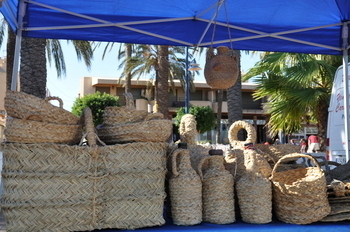 In the 1960s, the growth of the town meant the loss of the fishing tradition in Los Pesqueros. Tourism came to the area in a big way, and the need for new infrastructures changed the economy of the area radically, with activity shifting towards the services and retail sectors. Local families set up businesses to cater for the visitors and provide leisure facilities, and parks, promenades and wide avenues were built. The population of Los Cuarteros triples in the summer months due to the influx of tourists.
In the 1960s, the growth of the town meant the loss of the fishing tradition in Los Pesqueros. Tourism came to the area in a big way, and the need for new infrastructures changed the economy of the area radically, with activity shifting towards the services and retail sectors. Local families set up businesses to cater for the visitors and provide leisure facilities, and parks, promenades and wide avenues were built. The population of Los Cuarteros triples in the summer months due to the influx of tourists.
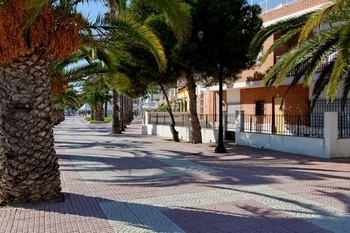 The expansion of the town was limited by the lack of available building land, but even so various hotels were built, including some four-star establishments, alongside other luxury facilities. A salt water therapy centre was also set up, adding another attraction for foreign visitors.
The expansion of the town was limited by the lack of available building land, but even so various hotels were built, including some four-star establishments, alongside other luxury facilities. A salt water therapy centre was also set up, adding another attraction for foreign visitors.
The area of Los Cuarteros has now become one of the most important tourist destinations of the Mar Menor area, alongside Lo Pagán and Villananitos. The increased tourism facilities and leisure-orientated establishments have led many visitors to live here permanently, rather than treat the area as a summer retreat, and this increase in population has brought about an improvement in infrastructures. In 2000 the Dos Mares secondary school was opened, reflecting the increase in the number of permanent residents in the area.
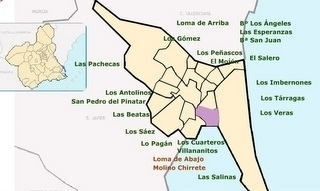 Today the population of the area is approaching 2000 people, with the services sector the most important source of employment.
Today the population of the area is approaching 2000 people, with the services sector the most important source of employment.
Where is Los Cuarteros?
Click for map, Los Cuarteros, San Pedro del Pinatar
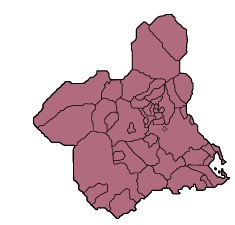



 Los Cuarteros is a Pedanía of San Pedro del Pinatar which occupies the corner by the Molino de Quintín, the settlement at the junction between the Mar Menor and the Parque Salinas.
Los Cuarteros is a Pedanía of San Pedro del Pinatar which occupies the corner by the Molino de Quintín, the settlement at the junction between the Mar Menor and the Parque Salinas. The Phoenicians were especially active traders, using a number of commercial ports on the coast of Murcia and were known to have been working along this coastline in around 700BC, as is evidenced by the numerous remains discovered, which include 2 shipwrecks at Mazarrón and the important Bajo de la Campana site at La Manga del Mar Menor.
The Phoenicians were especially active traders, using a number of commercial ports on the coast of Murcia and were known to have been working along this coastline in around 700BC, as is evidenced by the numerous remains discovered, which include 2 shipwrecks at Mazarrón and the important Bajo de la Campana site at La Manga del Mar Menor. Salt trading, salted fish and salted fish products such as garum sauce ( Click
Salt trading, salted fish and salted fish products such as garum sauce ( Click  By the 18th century, repopulation was underway, and Los Cuarteros was a humble group of fishermen’s dwellings.
By the 18th century, repopulation was underway, and Los Cuarteros was a humble group of fishermen’s dwellings. The situation in Los Cuarteros altered in the first half of the 20th century. Previously it had consisted of Los Cuarteros Altos, which occupied the land where the locality now lies, without direct access to the sea, and Los Cuarteros Bajos to the south, including the beach. A dispute arose in connection with the name of Los Cuarteros Bajos, and the inhabitants ended up demanding that the name be changed. The Town Hall of San Pedro del Pinatar eventually decided to rename it after a local citizen called “El Tio Nano”, and designated the area Villananitos. At this point it was separated from Los Cuarteros for all administrative purposes.
The situation in Los Cuarteros altered in the first half of the 20th century. Previously it had consisted of Los Cuarteros Altos, which occupied the land where the locality now lies, without direct access to the sea, and Los Cuarteros Bajos to the south, including the beach. A dispute arose in connection with the name of Los Cuarteros Bajos, and the inhabitants ended up demanding that the name be changed. The Town Hall of San Pedro del Pinatar eventually decided to rename it after a local citizen called “El Tio Nano”, and designated the area Villananitos. At this point it was separated from Los Cuarteros for all administrative purposes. In the 1960s, the growth of the town meant the loss of the fishing tradition in Los Pesqueros. Tourism came to the area in a big way, and the need for new infrastructures changed the economy of the area radically, with activity shifting towards the services and retail sectors. Local families set up businesses to cater for the visitors and provide leisure facilities, and parks, promenades and wide avenues were built. The population of Los Cuarteros triples in the summer months due to the influx of tourists.
In the 1960s, the growth of the town meant the loss of the fishing tradition in Los Pesqueros. Tourism came to the area in a big way, and the need for new infrastructures changed the economy of the area radically, with activity shifting towards the services and retail sectors. Local families set up businesses to cater for the visitors and provide leisure facilities, and parks, promenades and wide avenues were built. The population of Los Cuarteros triples in the summer months due to the influx of tourists. The expansion of the town was limited by the lack of available building land, but even so various hotels were built, including some four-star establishments, alongside other luxury facilities. A salt water therapy centre was also set up, adding another attraction for foreign visitors.
The expansion of the town was limited by the lack of available building land, but even so various hotels were built, including some four-star establishments, alongside other luxury facilities. A salt water therapy centre was also set up, adding another attraction for foreign visitors.  Today the population of the area is approaching 2000 people, with the services sector the most important source of employment.
Today the population of the area is approaching 2000 people, with the services sector the most important source of employment.